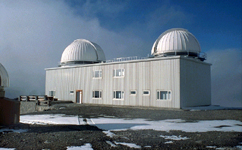Leonids 2002 (Spain) - Meteor
|
 |
|
- Removed a total of (1) style float:right;
- Removed a total of (1) align=center.
- Removed a total of (5) align=left.
- Removed a total of (1) align=right.
- Removed a total of (3) border attribute.
- Removed a total of (1) cellpadding attribute.
- Removed a total of (1) cellspacing attribute.








































 Sign in
Sign in
 Science & Technology
Science & Technology
